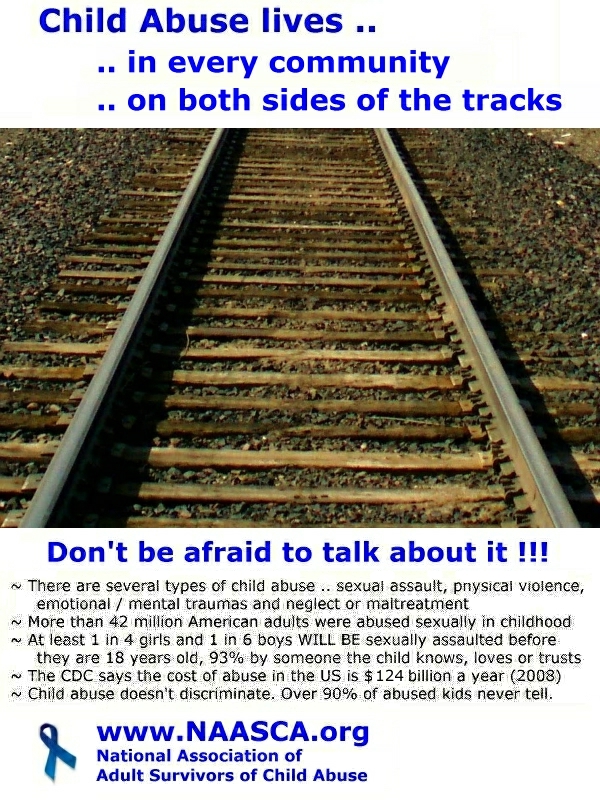 |
|
Child Abuse lives ..
...... in every community
...... on both sides of the track
Child abuse doesn't discriminate. It effects kids from every walk of life. Children in well-to-do neighborhoods, middle class communities and those who grow up in poor areas are equally susceptible to child abuse and trauma. Boys and girls of every ethnic background, skin color and religious belief are victimized, as are kids who come from families with either well educated or illiterate parents.
Children from a few specific communities are statistically even more likely to experience abuse and trauma. These include kids in foster care systems, Indigenous American groups, those who have a handicap or a disability, and some from very deprived inner-city and rural neighborhoods (especially those where there are an unusual number of single parent families).
At NAASCA we recognize four major types of child abuse: physical abuse, neglect or maltreatment, sexual assault, and emotional trauma.
Physical abuse is non accidental physical injury as a result of punching, beating, kicking, biting, shaking, throwing, stabbing, choking, hitting, burning, or otherwise harming a child, that is inflicted by a parent, caregiver, or other person who has responsibility for the child.
Neglect is the failure of a parent, guardian, or other caregiver to provide for a child’s basic needs. Neglect may be physical, medical, educational or emotional.
Sexual abuse includes activities by a parent or caregiver such as fondling a child’s genitals, penetration, incest, rape, sodomy, indecent exposure, and exploitation through prostitution or the production of pornographic materials.
Emotional trauma derives from a pattern of behavior that impairs the child's emotional development or sense of self worth. This may include constant criticism, threats, or rejection, as well as withholding love, support, or guidance.
Child abuse effects children from both sides of the track.
Please see: www.ChildWelfare.gov |
